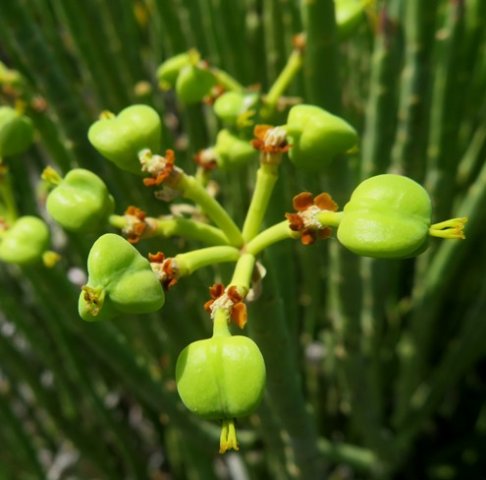Euphorbia mauritanica fruit too heavy for their stalks

Author: Ivan Lätti
Photographer: Thabo Maphisa
The five angular, velvety brown, bract-like glands are still intact below each fruit at this Euphorbia mauritanica stem-tip, resembling necklaces. These glands started off yellow, initially positioned close around the rest of the female cyathia. Elongation of the ovary stalk results in this configuration. Although thick, the green fruit stalks here lack the resources to uphold their fruits in exemplary fashion, allowing a slackness of presentation to set in.
A small yellow brush of persistent styles is erect on top of each green, three-segmented fruit, as if the fruits need jewellery.
The first cyathium of the inflorescence, the central male one, is nowhere to be seen. Its pollen-providing function always shorter lived than the fruit-bearing cyathia surrounding it, there are some inflorescences in which the central male pseudanthium or false flower never develops.
Fruit production is a bigger undertaking that outlasts the flowering. The female pseudo-flowers, the cyathia, continue in this industrious venture, operating in a ring of five or more seed-manufacturing units (Curtis-Scott, et al, 2020; Smith, et al, 2017; Frandsen, 2017; Vlok and Schutte-Vlok, 2015; iNaturalist).

